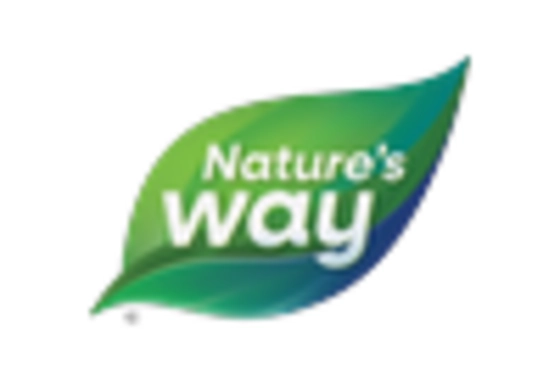Aging Population
The demographic shift towards an aging population is another critical factor influencing the Nutraceutical Ingredient Market. As individuals age, they often face various health challenges, leading to an increased demand for products that support healthy aging. Nutraceutical ingredients, such as omega-3 fatty acids, antioxidants, and vitamins, are frequently sought after for their potential benefits in managing age-related conditions. Market data suggests that the senior population is becoming more proactive about their health, which is likely to drive the demand for nutraceuticals. This trend indicates that the Nutraceutical Ingredient Market may continue to grow as older consumers seek products that enhance their quality of life and longevity.
Increasing Health Consciousness
The rising awareness of health and wellness among consumers appears to be a primary driver for the Nutraceutical Ingredient Market. Individuals are increasingly seeking products that promote health benefits, such as improved immunity, enhanced digestion, and overall well-being. This trend is reflected in the growing demand for functional foods and dietary supplements, which are often fortified with nutraceutical ingredients. According to recent data, the market for dietary supplements is projected to reach substantial figures, indicating a robust growth trajectory. As consumers prioritize preventive healthcare, the Nutraceutical Ingredient Market is likely to experience significant expansion, driven by the desire for natural and effective health solutions.
Rising Demand for Clean Label Products
The clean label movement is gaining momentum, significantly impacting the Nutraceutical Ingredient Market. Consumers are increasingly scrutinizing product labels, seeking transparency and natural ingredients. This trend is driving manufacturers to reformulate products, opting for simpler, recognizable ingredients that align with consumer preferences. Market data indicates that products labeled as 'clean' are experiencing higher sales, reflecting a shift towards health-conscious purchasing decisions. As consumers become more informed about food sources and ingredient origins, the Nutraceutical Ingredient Market is likely to adapt, focusing on clean label formulations that resonate with the values of modern consumers.
Expansion of Functional Foods and Beverages
The growing popularity of functional foods and beverages is a significant driver for the Nutraceutical Ingredient Market. Consumers are increasingly incorporating these products into their diets, seeking added health benefits beyond basic nutrition. This trend is evident in the rise of fortified foods, probiotic beverages, and snacks enriched with vitamins and minerals. Market analysis suggests that the functional food sector is projected to grow substantially, driven by consumer demand for products that support health and wellness. As the Nutraceutical Ingredient Market evolves, it is likely to see a continuous influx of innovative functional products that cater to diverse consumer needs.
Technological Advancements in Product Development
Technological innovations in the formulation and extraction of nutraceutical ingredients are transforming the Nutraceutical Ingredient Market. Advances in biotechnology and food science enable the development of more effective and bioavailable ingredients, catering to the evolving preferences of consumers. For instance, encapsulation techniques and nano-technology are enhancing the delivery and efficacy of nutraceuticals. This progress not only improves product quality but also expands the range of applications for nutraceutical ingredients in various food and beverage products. As companies invest in research and development, the Nutraceutical Ingredient Market is likely to witness a surge in innovative products that meet consumer demands for efficacy and convenience.


















Leave a Comment